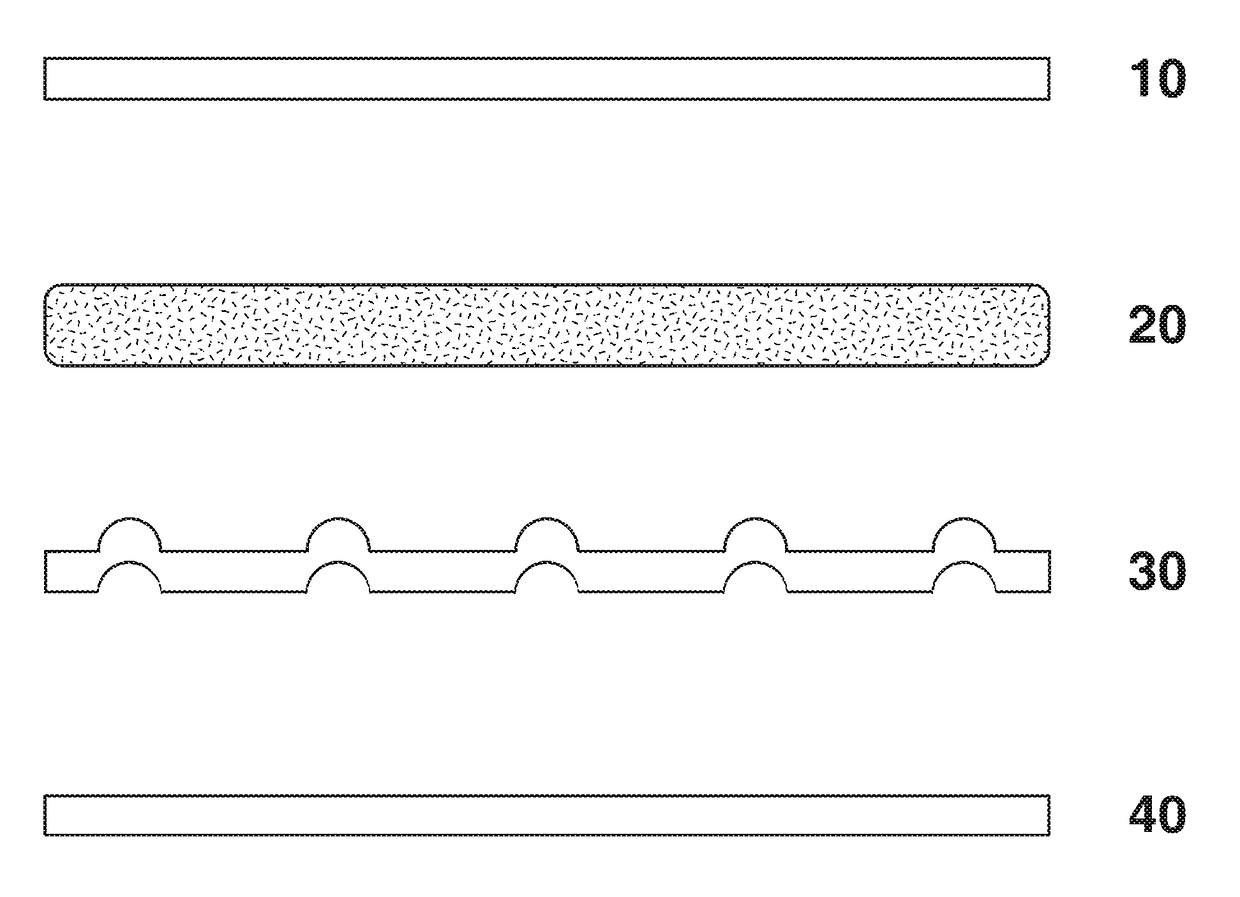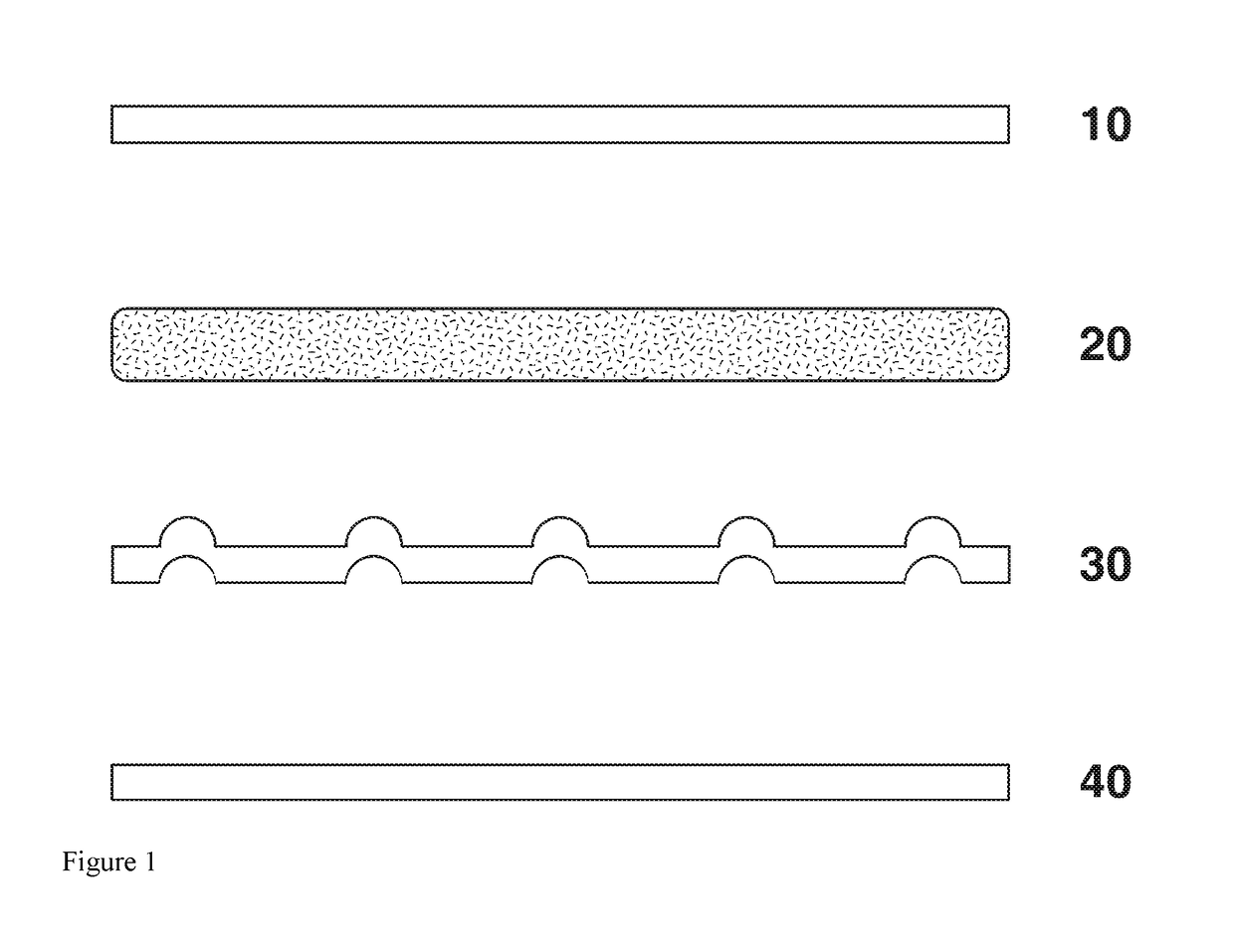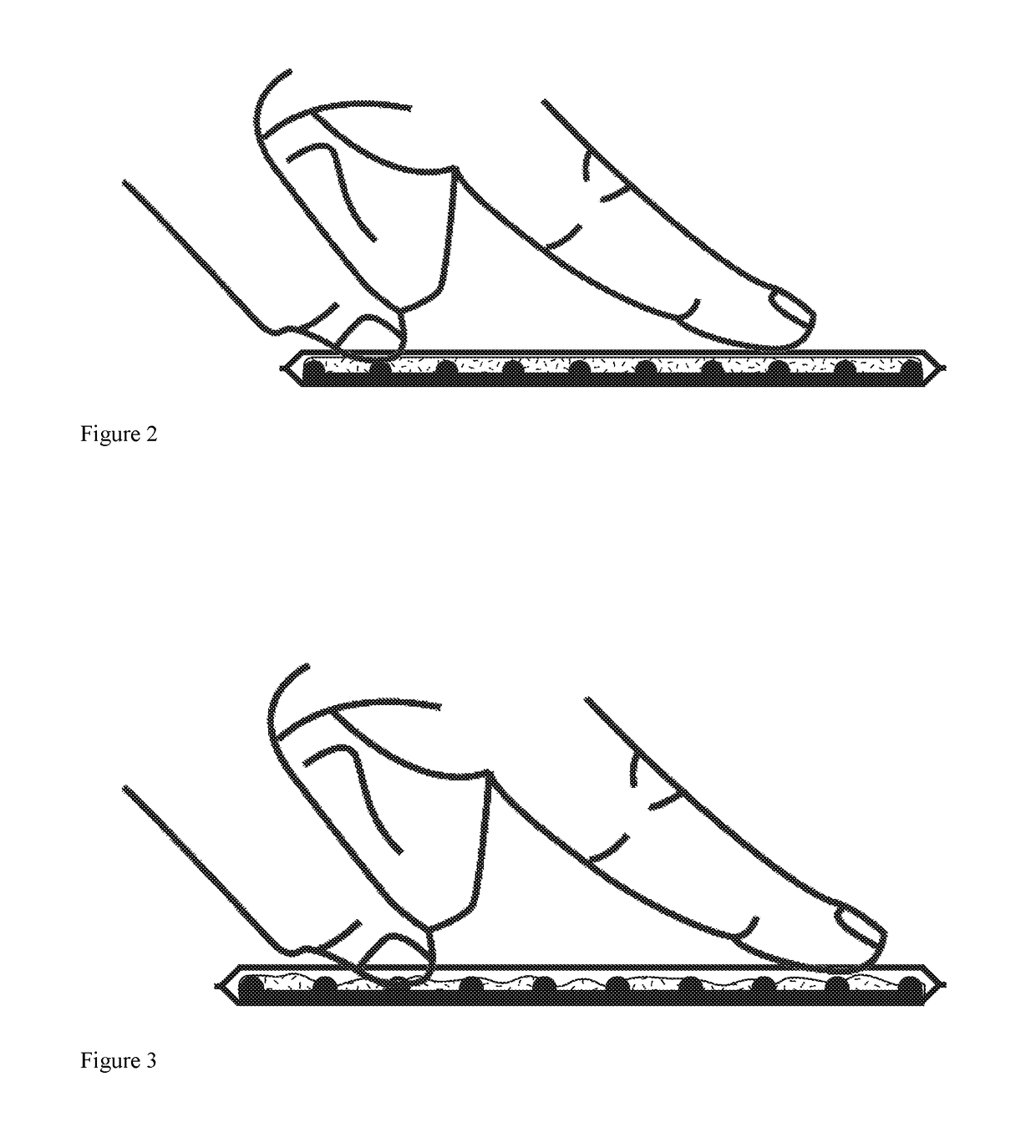Bio-reactive food expiry label
a technology of food expiry label and bioactive substance, which is applied in the direction of instruments, measurement devices, scientific instruments, etc., can solve the problems of food colour and flavour adversely affected, food packaging damage, food becoming unsafe faster,
- Summary
- Abstract
- Description
- Claims
- Application Information
AI Technical Summary
Benefits of technology
Problems solved by technology
Method used
Image
Examples
Embodiment Construction
[0031]Turning to FIG. 1, mammalian gelatine gel layer 20 (obtained from Jellice Pioneer Europe B.V.) is placed on top of plastic textured sheet 30 and these are sandwiched between plastic film layers 10 and 40, using a plastic sealer. This four-layer label is then adhered to the protective film of a food package at the time when the food is being packed inside it, so that the microbial attacks are aligned with each other.
[0032]If the label is checked by running a finger across the surface at this stage, the user would only feel a smooth, hard texture as the gelatine gel would still be in a solid state, as seen in FIG. 2, meaning that it is still fresh. The gelatine layer then proceeds to naturally decay at the same rate as the meat or fish, as seen in FIG. 3, and speeds or slows this process down according to warmer or cooler temperature changes, respectively. Once the food has been exposed to a warm enough environment for enough time for it to be no longer safe for consumption, the...
PUM
| Property | Measurement | Unit |
|---|---|---|
| area | aaaaa | aaaaa |
| area | aaaaa | aaaaa |
| thickness | aaaaa | aaaaa |
Abstract
Description
Claims
Application Information
 Login to View More
Login to View More - R&D
- Intellectual Property
- Life Sciences
- Materials
- Tech Scout
- Unparalleled Data Quality
- Higher Quality Content
- 60% Fewer Hallucinations
Browse by: Latest US Patents, China's latest patents, Technical Efficacy Thesaurus, Application Domain, Technology Topic, Popular Technical Reports.
© 2025 PatSnap. All rights reserved.Legal|Privacy policy|Modern Slavery Act Transparency Statement|Sitemap|About US| Contact US: help@patsnap.com



